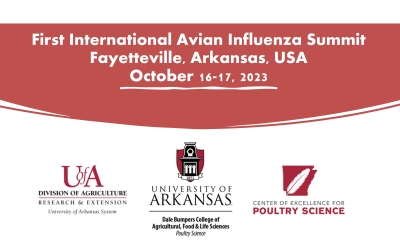Highly pathogenic avian influenza: Considerations for vaccination and implications for international trade. A primary breeder’s perspective
Authors: Alberto Torres
GMPC TOP
2023.
vol. 3, Iss. 1
pp:0-16
Doi: https://doi.org/10.51585/gtop.2023.1.0019

Abstract:
Vaccination against avian influenza requires the assessment of multiple technical, legislative, and trade aspects related to its epidemiology and the country’s veterinary infrastructure, commerce policies, and interests. According to the World Organization of Animal Health (WOAH), vaccination against AI should not preclude a country from eligibility for trade as long as it can prove freedom from natural infection. Importing countries may have policies above the general guidelines offered by WOAH; however. Whether living with the disease for a long(er) time, having to adjust vaccines to better protect against newer avian influenza virus variants or clades, and/or whether there are indemnity incentives available to compensate growers for the losses related to outbreaks, considerations pertaining to the geographic spread of the disease across the country’s territory, the sector(s) of the poultry industry being affected, and whether all alternatives to combat the disease have been explored, and perhaps exhausted, should also be taken into consideration. WOAH’s guidelines for the continuation of trade include zoning that limits restrictions to a geographical area (10 km, county, or state) instead of the entire country. Compartmentalization also offers another approach to the continuation of trade for premises that demonstrate robust biosecurity and management programs backed by testing to demonstrate freedom from infection. Alternatives to avoid or reduce waste products (e.g., meat and eggs) should also be considered according to implications to the risk involved of further spread onto other avian and poultry populations. Considering the fact that the 2.3.4.4b clade has been able to infect a large number of wild bird and mammalian species and, at least for countries where the disease is not endemic in its commercial sectors, vaccinating only poultry, at least in countries with low prevalence and incidence rate would not prevent the spread of the disease amongst that large pool of susceptible animal species. For this latter aspect, perhaps vaccination strategies would be more effective if developed towards mitigating prevalence in the natural reservoirs. This implies developing vaccines capable of being deployed in mass. In the large scheme of things and within the one-health concept, this latter approach may have a larger impact on combatting high pathogenicity avian influenza.
Keywords:
Influenza, HPAI, Clades, One-Health, Vaccination, Preventive measures, 2.2.4.4b clades
Statistics:
Article Views: 965
PDF Download: 5